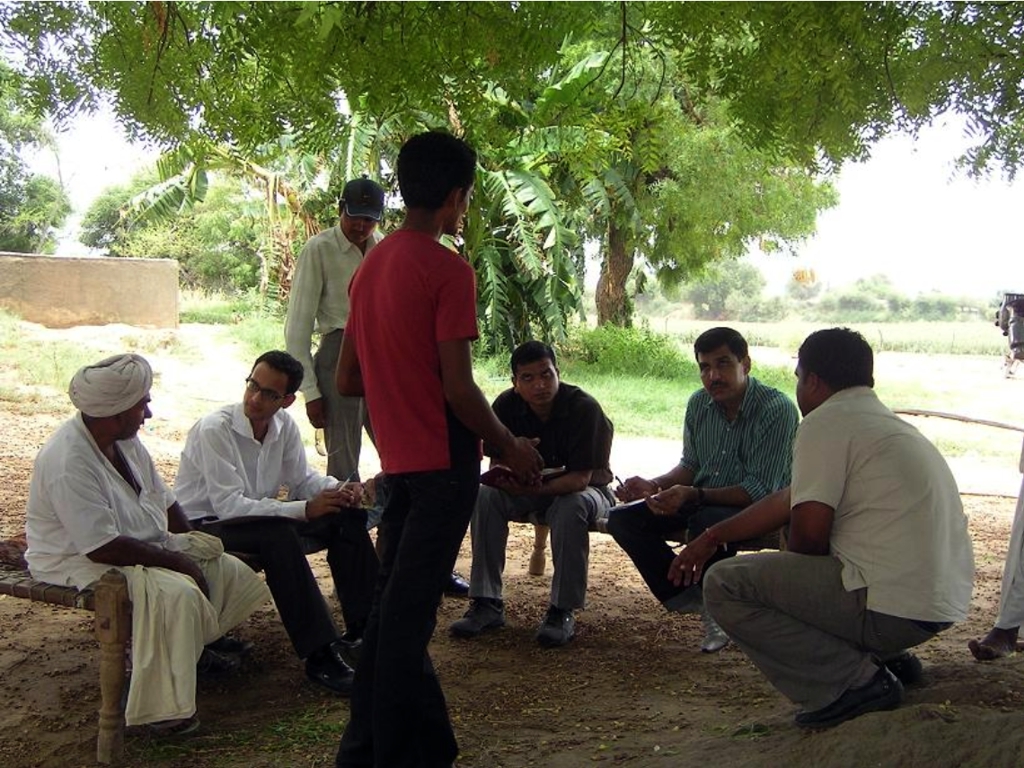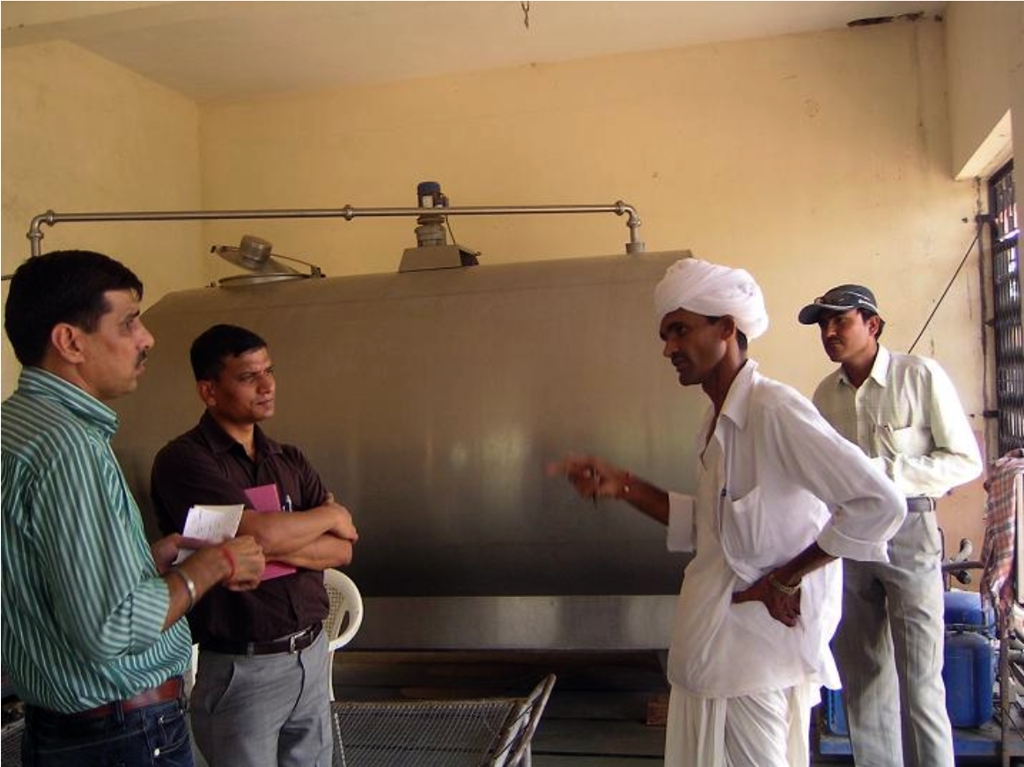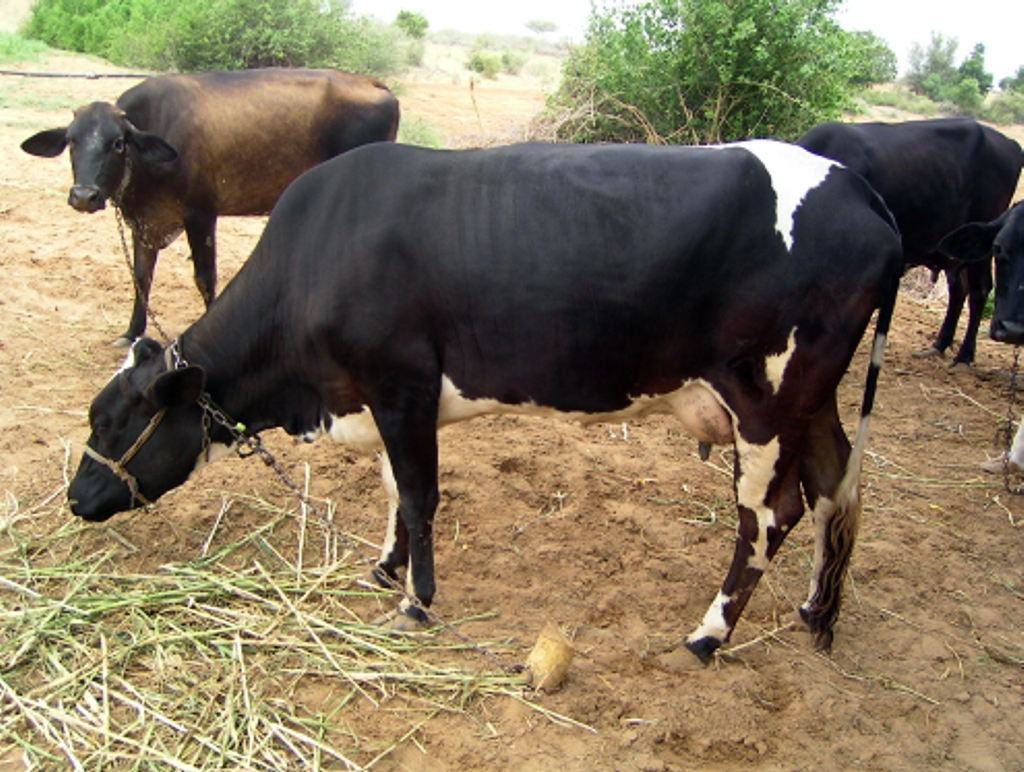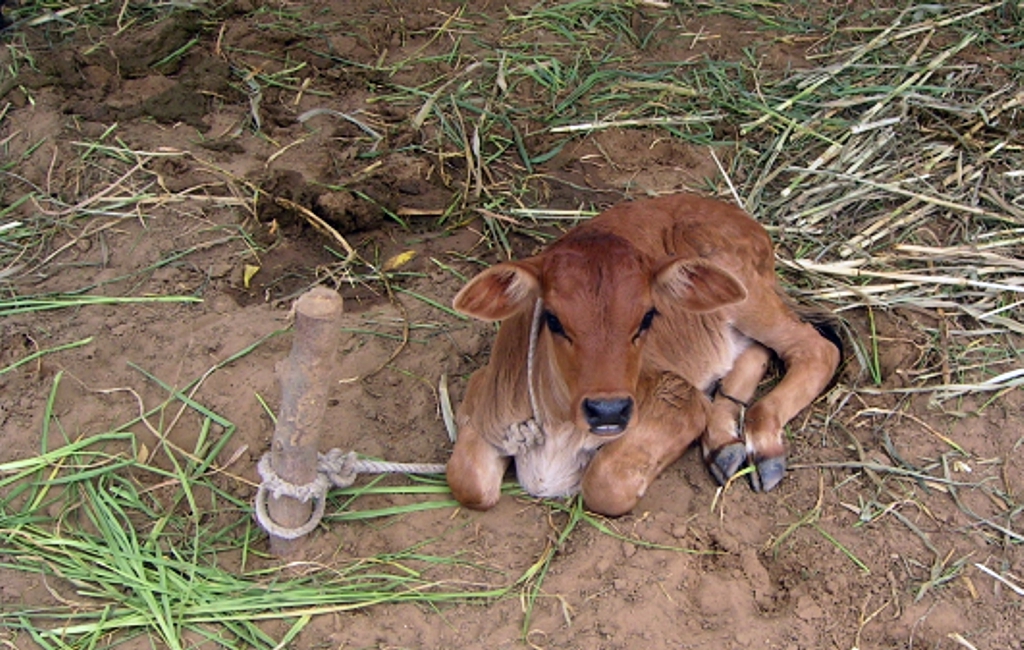 INTRODUCTION
INTRODUCTION
BACKGROUND
There is an emerging consensus that cows and buffaloes on farms associated with Indian dairy cooperatives are treated humanely, and thus that veganism is not a requirement for adherents of Ahimsa in India.
This article argues that this analysis is deeply flawed. The treatment of cows and buffaloes associated with dairy cooperatives is full of violence: cows and bulls are prematurely sent for slaughter (often across states); cows often suffer from inflamed udders; calves are separated from their mothers; there is inadequate protection from the elements; and there are cruel reproductive programmes involving artificial insemination and cross-breeding with non-native breeds. Moreover, much of the other milk available in India comes from private dairies or ‘tabelas’, where conditions are even worse.
Given that the leaders of cooperative societies and the Indian government are promoting violent practices to raise the efficiency of milk procurement, the situation is likely to only get worse in the future, and thus, the only practical solution for any adherent of Ahimsa is to go vegan.
In June 2008, I spent 7 weeks working in the rural banking division of ICICI India, where I was given the task of designing a financial product for dairy farmers to help them purchase extra cattle. The project required extensive study of the Indian Dairy Industry, and I visited over 5 dairy farms (with herds ranging from 2-30 cattle) associated with Gujarati cooperatives (Gujarat is home of the dairy cooperative movement). One farmer was head of his dairy cooperative at a district level.
Before undertaking the project, I was under the impression, like many others, that milk procurement at a village level in India was (in most cases) an idyllic and humane process. My observations in India have led me to conclude otherwise.

OBSERVATIONS ON SLAUGHTERING
- There were no bulls present at any of the farms that I visited (an indication that bull calves are either culled or sold for slaughter)
- There were no milch animals (either cows or buffaloes) over the age of 10 years on any of the farms I visited. When I asked farmers if they loved cows, they responded by saying that they love cows, and looking after cows is in their blood. When I asked why they did not have any older milch animals, they said they started to produce less milk and were too expensive to keep. When I asked them what they did with older cows, they said sold them on (generally for about 30% of the price of a milch animal of a similar breed in its 1st lactation). When I asked what the purchasers did with the milch animals, they went silent or said "whatever they want to do with them". Sometimes I would also ask why someone would want to buy them if they were too expensive to keep, and I would get a similar response. These responses are a clear indication that these animals were sold for slaughter, and also the farmers were not comfortable to talk about it.
- Although many states outlaw slaughtering of cows, these rules do not apply generally to buffaloes (which make up around 50% of indias herd of milch animals), and appear not be enforced when considering; a) the culling of young calves b) the selling of animals across states for slaughter in the destination state.
- NABARD (the Indian state-owned National Bank for Rural and Agricultural Development) and the Dairy India Year Book (by Pr. Gupta - regarded as the 'bible' of the Indian Dairy Industry) have published best-practice dairy farming articles recommending that all bull calves are culled within 10 days of birth. The head of a village level cooperative society (VLCS) in Gandhinagar confirmed that this practice is being actively promoted by cooperative societies.

- It was clear that the cows I saw were not natural breeds. They were hybrids of Holstein- Friesian Cows or Jersey cows mixed with Desi (domestic Indian) breeds. Though these breeds have high milk yields, they are not suited to the Indian Climate. It is highly unlikely that these breeds were created without cruelty, and most of the breeding / testing centres are in the states of Haryana and Punjab (meaning long transport times - probably in very uncomfortable conditions).
- Most of the animals were tethered to trees or the ground (not free to graze), with very little room to move, and were not provided with adequate shelter from the scorching sun.
- Calves were kept separate from their mothers. Many of the farmers indicated that calves were not allowed to suckle milk before milk was extracted for humans, though in some cases calves were allowed to suckle for a short period of time as a way to encourage milk secretion.
- Although I did not see any direct violence, the milch animals were clearly afraid of humans (both visitors and farmers), i ndicating some sort of violent conduct towards the animals. This is a stark contrast from the cattle that I have observed at animal sanctuaries such as Hugletts Wood farm.
- It was clear that many of the cows suffered from mastitis (inflammation of the udders)
- Most of the cows were impregnated by artificial insemination by a veterinary doctor, although two farmers indicated that they 'leave the cows in different field with a bull from another farm let god do his work'

 OTHER COMMENTS
OTHER COMMENTS
Industrial private dairies or ‘tabelas’, are the two main alternatives to cooperative society procured milk (for those that do not own their own bovines). Although I have not got first hand experience observing the treatment of milch animals at either, a number of animal welfare organisations and individuals (including Gandhi) have documented concerns about the conditions of animals in such institutions, and I understand that both are worse (in terms of treatment) than cooperative societies.
Industrial private dairies are said to treat milch animals like machines, and rear them in factory-farm conditions. ‘Tabelas’ are said to keep milch animals in filthy conditions, inject animals with dangerous chemicals such as oxytocin, and have inadequate veterinary care.
I have come across several articles on the dairy industry (from a variety of experts in government, cooperative societies, private dairies and research institutions) recommending cruel practices such as culling of bull calves and premature slaughtering of milch animals (in fact ICICI won’t give a loan to a farmer that has milch animals older than 10 years). I have also come across several articles documenting how the government wants to expand output in the dairy sector by encouraging efficient production methods (which inevitably will cause increased suffering to milch animals).
CONCLUSIONSThe idyllic impression that many hold about the treatment of cows on dairy farms in India are deeply misguided. Based on my observations of farms in Gujarat (which is said to treat its cattle better than most other states), dairy cows and buffaloes endure endless suffering in a number of dimensions. Suffering that one not may observe simply driving past a farm.
Given that the leaders of cooperative societies and the Indian government are promoting violent practices to raise the efficiency of milk procurement, the situation is likely to only get worse in the future, and thus, the only practical solution for any adherent of Ahimsa is to go vegan.
Going vegan has never been easier, and a number of delicious vegan alternatives to milk, butter and ghee are widely available across India.
Visit www.indianvegan.com, www.sharan-india.org, or www.indianvegansociety.com, for further information about veganism in India.
 Sagar K. Shah
Sagar K. Shah